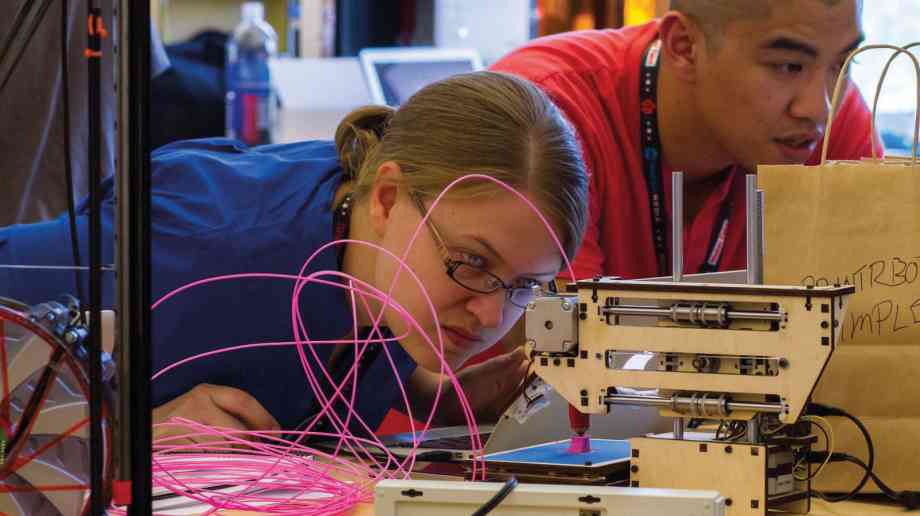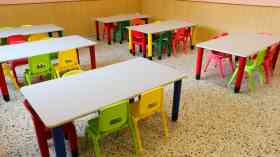
Proving the worth of Design & Technology
Richard Green, chief executive of the D&T Association, believes that Design & Technology is frequently misunderstood, and therefore, under appreciated. Here he explains what modern Design & Technology involves and ways to showcase the importance of the subject.
Did you study Design & Technology (D&T) when you were at school? Do you know what is included in the Design & Technology national curriculum? Do you know what 11-18 year olds are capable of designing and making? Do you know the range of digital design and manufacturing equipment that many secondary school Design & Technology departments now have at their disposal? Should your answer to any of these questions be no, you will not be alone.
Design & Technology is one of the newest and, tragically, most frequently misunderstood – and thus often under-appreciated – subjects on the school curriculum. If you went to school before 1990 you will not have studied Design & Technology and so you may, understandably, think that it is very similar to subjects like woodwork, metalwork and needlework that you may have studied. Nothing, however, could be further from the truth and, whilst the subject still involves practical activity working with a range of materials, Design & Technology has moved on a long way.
Design & Technology now includes designing and making involving the use of industry-standard computer aided design and manufacture (CAD/CAM), micro-electronics and computer control, smart and modern materials. It also harnesses and enhances employability skills such as team working, communication, problem solving and creativity. Still not convinced? Then have a look at the video, ‘What is D&T – and why do we need it?’ on the D&T Association’s website for an insight into this challenging subject.
Exhibitions
There are means by which schools may look to overcome some of the misconceptions which will undoubtedly be held by parents, local employers and, unfortunately, by some senior leaders in schools.
Celebrating students’ Design & Technology work through exhibitions should be a vital part of communicating to parents and the local community what Design & Technology is and why it is such an important subject. A prime example of how successful this type of initiative can be was demonstrated in early July at Yateley School, Hampshire.
Students at this school were offered an opportunity to showcase their creative talents at the ‘Yateley Young Designers Exhibition’. GCSE and A level students in art, graphics, photography, Design & Technology and food displayed their work over three days in an end of year show.
At the launch event Sally Williams, head of the Design & Technology faculty, made the insightful comment: “With skills shortages in areas such as design, manufacturing, construction and engineering it is important that Design & Technology and arts subjects remain in the school’s curriculum, the students of today will be the designers and engineers of tomorrow. We are very lucky at Yateley, with a supportive head teacher and governors, design and arts- based subjects continue to be very popular with students at all levels and students achieve highly.”
This was not a one-off for the school. Indeed, the show, which ran for three days and was attended by many visitors including governors, students, family and friends as well as the local community, is now in its ninth year, surely a tribute to and acknowledgement of the significance and value of these subjects.
Yately School is to be congratulated, but we should not think it is alone in hosting such an event. Exhibitions such as this usually take place at the end of the summer term when all the examination coursework is available for display. This is fine, but what can schools do during the rest of the year?
Learning environments
I would suggest that thinking about the environment both inside and outside of the Design & Technology department is a good starting point. Design & Technology rooms ought to be exemplars of best practice and there are some questions I think would feature on my checklist. These would include but not be limited to: are the rooms ‘designerly?’; do they engage, motivate and demonstrate best practice?; and are they welcoming, bright, tidy and clean?
Some of the above are easily achieved but, with a little extra thought and effort, it is possible to transform what may appear to be bland spaces into highly engaging learning environments. Commercially produced posters are a staple resource, but these need to be supplemented with in-house display material. Exemplars of design work which set aspirational standards for pupils should be essential. In addition to this, many Design & Technology departments now possess computer‑controlled vinyl cutters which can be used for, amongst many other uses, production of professional‑level signs, banners and images.
Careers
I am not suggesting by any means, however, that simply displaying random posters provides an all-encompassing solution. Thought needs to be given to themes which support specific topics or objectives. One theme which is frequently ignored much to my surprise and disappointment, is Design & Technology‑related careers. Each and every Design & Technology department should make a feature of a ‘careers wall’. This would show the vast, exciting and rewarding range of career opportunities which exist in the creative, engineering and manufacturing sectors of the economy. Such a wall can be even more powerful if it is displayed outside the department, for example in a public area, where parents and visitors can see it.
Allied to this and extending the concept further, some schools also tap into their alumni who have gone on to work in some of the aforementioned industries and whose stories can be demonstrated in simple yet motivational and inspiring posters which detail their school and FE/HE qualifications, the courses or apprenticeships they studied after school and the careers they are now enjoying.
Not only do these posters demonstrate the relevance of studying Design & Technology but they can also open the eyes of younger pupils and their parents to career possibilities that they may not have realised existed or were accessible.
Links with industry
Another proven route that, one might argue should be trodden more often, is for schools to foster links with industry to develop and deliver Design & Technology projects. It is undoubtedly true that this tactic takes more effort than any of those already touched upon but the rewards can be significant.
The D&T Association has shown the positive impact of this type of collaboration via a number of small scale projects and, as a result, the D&T Association is now running its ‘Skills For Industry’ (SFI) programme. The idea behind the SFI programme is straightforward. SFI links five secondary schools with a local Design & Technology-related company in order to help Design & Technology teachers develop the industry-relevant knowledge and skills needed by the company, which they can subsequently pass on to their pupils during and beyond the project. The programme provides a structured itinerary of training and coaching relevant to the curriculum and to enhance technical and employability skills; encourage creativity and innovation; provide insights into career pathways including apprenticeships; and develop comprehensive, business-linked teaching resources, which would be available for any school to download after the project.
The SFI initiative was preceded by the D&T Association’s pilot called the ‘Skills Gap’ programme. This had the outcome of six, industry-focused, comprehensive Design & Technology projects with six companies, including Renishaw, Airbus and the ADI Group. The resulting activities and resources can all be downloaded for free from the D&T Association’s website (www.data.org.uk).
There are other examples of industry-linked work and the benefits it brings and what it undoubtedly does do is bring the world outside of education into the classroom. A consequence of this is that all those involved, teachers and industry partners and pupils, begin to develop a better understanding of and respect for both education and business and the way in which both can be mutually supportive and help to raise standards and motivation.
Celebrating success
The D&T Association would like to hear from schools, and to promote ideas and activities which address some of the issues described here. Any Design & Technology departments that also have examples of successful industry/education links should get in touch with the Association to share the information. It is only by celebrating and promoting effective, relevant and progressive Design & Technology as widely and as often as possible that we can begin to develop understanding and overcome some of the misconceptions described earlier. Denying pupils the opportunity to study this subject that can be simultaneously academic and practical and lead to rewarding careers is unfair on the pupils, their parents who want their children to have fulfilling school and working lives and the companies that could benefit from skilled and innovative personnel at all levels and contribute around £500 billion to GB plc.
Further information
www.data.org.uk
Latest News
19/12/2025 - 09:54
The Education Committee has expanded its ongoing inquiry into the early years sector to examine how safeguarding can be strengthened in early years settings.
18/12/2025 - 09:25
The UK will be rejoining the Erasmus programme in 2027, following a package of agreements with the EU.
17/12/2025 - 09:31
Ofqual has fined exam board Pearson more than £2 million in total for serious breaches in three separate cases between 2019 and 2023 which collectively affected tens of thousands of students.
16/12/2025 - 09:19
The average funding rates will increase by 4.3% for under 2s, and by almost 5% for 3-and-4-year-olds.
15/12/2025 - 10:30
Local colleges are set to receive £570 million in government funding to expand training facilities in areas such as construction and engineering.







